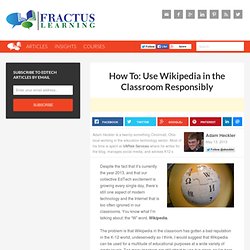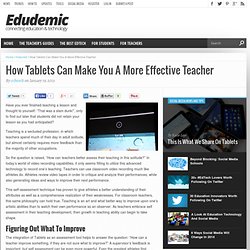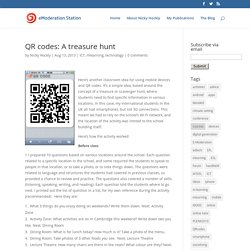

How To: Use Wikipedia in the Classroom Responsibly. Despite the fact that it’s currently the year 2013, and that our collective EdTech excitement is growing every single day, there’s still one aspect of modern technology and the Internet that is too often ignored in our classrooms.

You know what I’m talking about: the “W” word. Wikipedia. The problem is that Wikipedia in the classroom has gotten a bad reputation in the K-12 world, undeservedly so I think. I would suggest that Wikipedia can be used for a multitude of educational purposes at a wide variety of grade levels. Too many teachers are still afraid to use it in class, so I’m here to right that wrong and show our educators how they can responsibly integrate Wikipedia into their lessons. 1.
Even though it has a reputation among teachers for inaccuracy and lawlessness, Wikipedia does have a few guidelines that all editors should abide by. Free content: All content submitted to Wikipedia must be original, since it will become part of the commons. 2. 3. Here are some pointers: 4. 5. KEEP CALM AND CARRY ON with the Keep Calm-o-matic. 100 Teaching Tools You Should Know About. How Tablets Can Make You A More Effective Teacher. Have you ever finished teaching a lesson and thought to yourself: “That was a slam dunk!”

, only to find out later that students did not retain your lesson as you had anticipated? Teaching is a secluded profession, in which teachers spend much of their day in adult solitude, but almost certainly requires more feedback than the majority of other occupations. So the question is raised, “How can teachers better assess their teaching in this solitude?” In today’s world of video recording capabilities, it only seems fitting to utilize this advanced technology to record one’s teaching.
Teachers can use classroom video recording much like athletes do. This self-assessment technique has proven to give athletes a better understanding of their attributes as well as a comprehensive realization of their weaknesses. Figuring Out What To Improve The integration of Tablets as an assessment tool helps to answer the question: “How can a teacher improve something, if they are not sure what to improve?” QR codes: A treasure hunt. Here’s another classroom idea for using mobile devices and QR codes.

It’s a simple idea, based around the concept of a treasure or scavenger hunt, where students need to find specific information in various locations. In this case, my international students in the UK all had smartphones, but not 3G connections. This meant we had to rely on the school’s Wi-Fi network, and the location of the activity was limited to the school building itself. Here’s how the activity worked: Before class 1 I prepared 10 questions based on various locations around the school. What 3 things do you enjoy doing on weekends? (Question 10 is not really a question, but ‘closes’ the activity) Tip: Before you create your questions, check that any people potentially involved (e.g. for interviews) are happy to take part and/or to be photographed, and that they will be available in situ during the time of your class to answer your students’ questions!
2. 3. During class Classroom management tips. Sign Language: Fun Learning for Kids by Handcrafted Web Solutions. By Leticia Barr | Learning a new language isn’t always easy, but with repeated practice and exposure through a variety of different methods — like these foreign language learning apps — parents can help foster bilingualism.

These days there really is an app for everything — and every language! — but the best ones are always: easy to use, feature native speakers so kids can hear the correct pronunciation of words, and engage through interactive content that reinforces what is being learned at school, after-school clubs, and language classes. 10 Foreign Language Learning Apps to Foster Bilingualism Gus on the Go What it is: Developed by two parents, Gus on the Go allows kids to learn 14 different languages, including Spanish, French, and Hebrew. Why we like it: Gus, an animated traveling owl, guides children on an interactive series of 10 vocabulary activities for each language.
Download it here for iOS ($3.99 for each language) and Android ($2.99 for each language) devices. Using Twitter with your Students. Image via Flickr under Creative Commons license Sean Dowling, an Educational Technology Coordinator, looks at how teachers can continue to support their students’ learning outside of the classroom through the use of Twitter.

Twitter is an online social network website and microblogging platform that allows users to post and read text-based messages (often with attached images), called tweets, up to 140 characters long. According to Statistic Brain (2013, May 7), there are over 554 million active registered Twitter users who tweet 58 million times per day, and projected revenue for 2013 is almost $400 million.
In this post, I will make some suggestions as to how to use Twitter with your students. Getting Started To use Twitter, both you and your students will need to set up Twitter accounts.